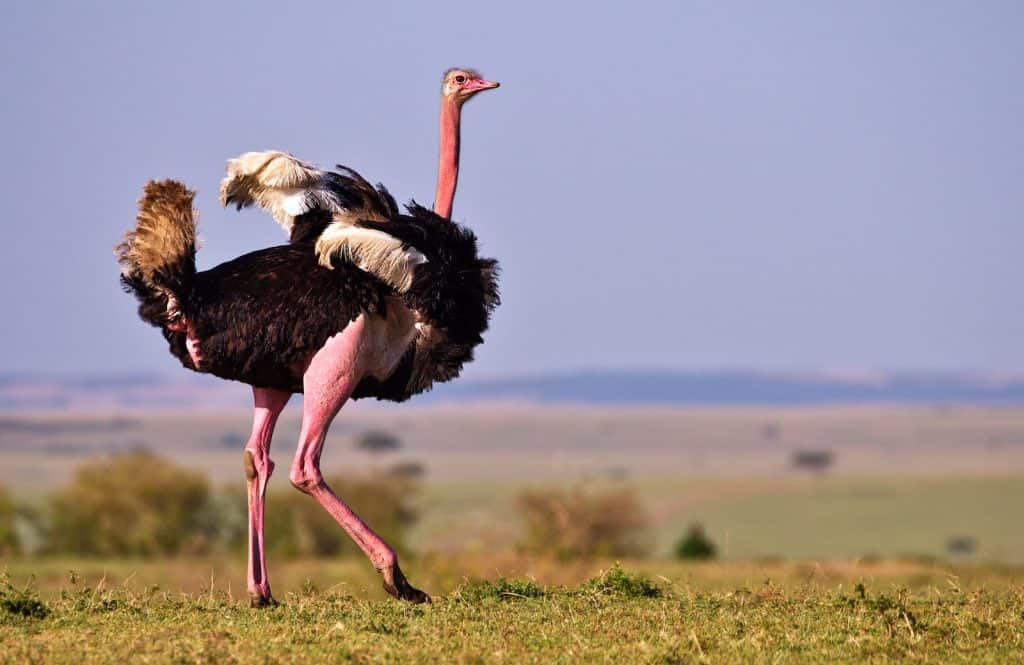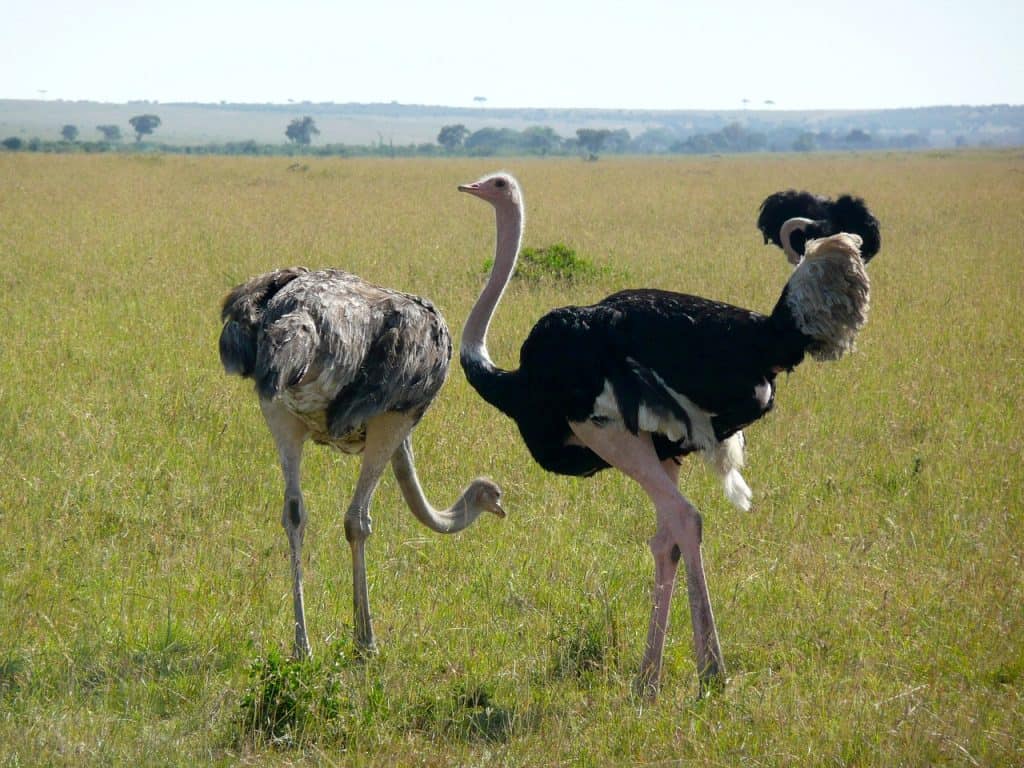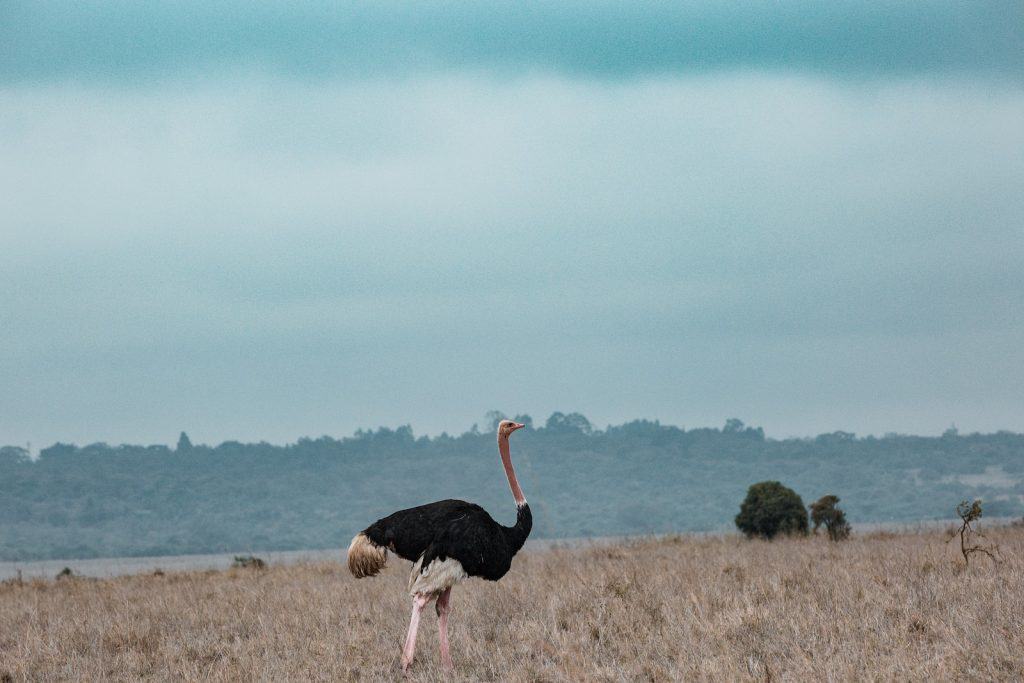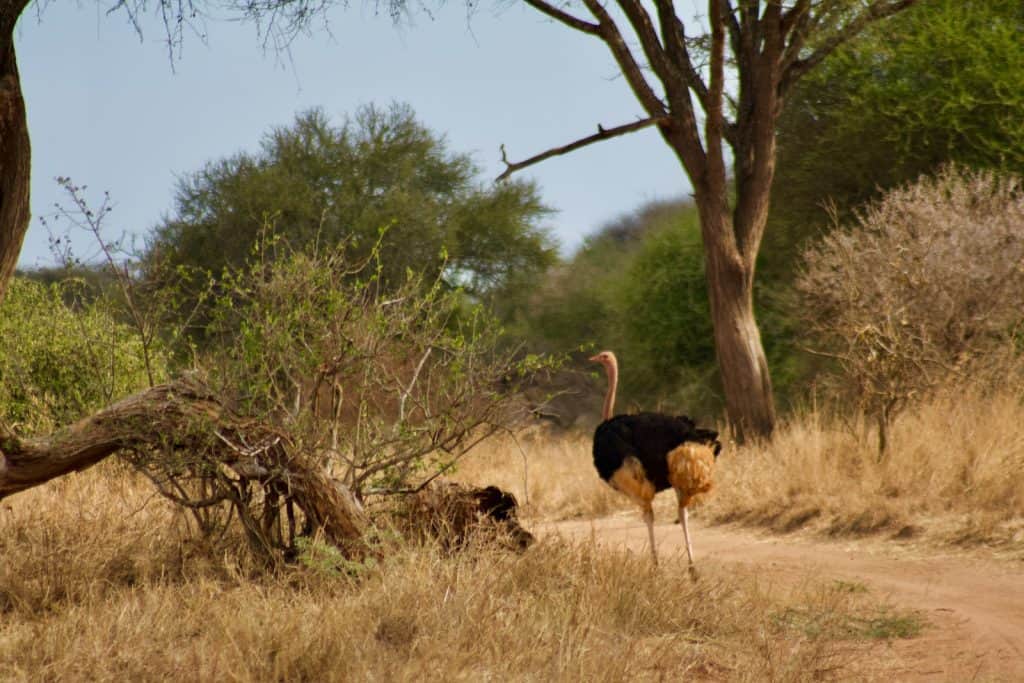
The African continent is home to some of the most unusual creatures in the world, including the Masai Ostrich. The Masai ostrich can fly 43 miles an hour and is slightly smaller than the North African one. The decline in the ostrich population has been rapid due to predation, habitat loss, and hunting. However, the Masai and other subspecies have survived by living on farms.
We will examine the Masai’s characteristics and discuss how this remarkable bird survived the harsh conditions of Kenya, Tanzania, and Somalia.
Here are some quick facts about Masai Ostriches

| Name of the breed: | Masai Ostrich |
| Where is it from? | East Africa |
| Uses: | Clothing, meat, eggs, leather, and other animal products |
| (Male) Size: | 254 pounds |
| (Female) Size: | 220 pounds |
| Color: | Black and white plumage with pink necks and pink legs |
| Lifespan: | 25-40 years in nature, up to 50 years in captivity |
| Climate Tolerance: | Savannah conditions that are dry |
| Care Level | Moderate |
| Production: | In the wild, there are 10-20 eggs per year; in the field, there are 40-60 eggs |
| Other uses | Ostriches can be raised in Africa and the United States. |
Masai Origins
Ornithologists believed that the earliest ancestors of ostriches were found in Africa 20 million years ago. A recent 2021 study revealed that the birds originated in Asia 40million years ago, and didn’t reach Africa until the Miocene period. The Masai is closely related to the South African Ostrich (Struthio camlus australis). The Masai is not thought to be a close relative of Struthio camelus siriacus, the extinct Arabian Ostrich.

Water is essential for survival. However, some animals find it difficult to find water in the harsh environment of East Africa’s savannahs. The Masai Ostrich doesn’t drink water often, but it does get moisture from its diet. It has three stomachs and depends on leaves, seeds roots, flowers, berries, and insects for sustenance. It eats mostly herbivorous foods, but it also enjoys small reptiles or insects.
The male’s legs and neck become more reddish when mating season starts in spring. Males have brighter plumage than their female counterparts and use their bushy feathers as a way to impress potential mates. Males select a primary mate, the major hen, and may also choose two or more mating partners, called minor hens.
The eggs are incubated in communal nests where the major hen and rooster take turns heating the eggs. The male will run away from the nest if a predator approaches, while the female guards the eggs. If the offspring of the nest are young, the mother will flee to another area along with her children.
Masai ostriches are two-toed with sharp talons and have two-toed feet. They are the only predator they have in Kenya. However, they are also vulnerable to attacks from leopards, jackals, and hunting dogs as well as humans in other African countries. Although lions can easily take down an ostrich with their many attacks, a bird can do the same thing and break a lion’s neck with one kick. Because of its incredible running speed, an ostrich will often flee to escape rather than fight and it is usually able to run away without being hurt. Although the Masai is capable of running 33 miles an hour, it can also run a quick burst of 43 mi per hour.

Uses
Masai ostriches in East Africa have shelters and farms to protect them against poaching and hunting. Wild birds are however hunted for their feathers, meat, and skin. Ostrich meat and eggs are exported from Kenyan ostrich farms. The skin of the birds is used for leather products. Ostriches can be aggressive and not the best pets. However, they are often used to entertain large groups of people. Ostrich racing is very popular in South Africa. However, it is also performed annually in Chandler, Arizona during the ostrich festival.
Appearance and Varieties
The Masai and North African Ostriches have pink necks. However, the common ostrich and subspecies have gray necks. Masai males have dark feathers with white tips while the hens have darker, brownish feathers and white tips. Although they look bald from afar, both sexes have fine down on their heads. Why do the male feathers have brightly colored feathers, when they can’t fly? The male plumage was designed for mating, not flying. It ruffles its feathers in order to make it appear bigger and more impressive to its mates and predators.
Researchers believe that predators can see the color of the feathers better than the females. This is why researchers think that more cocks are being killed than hens.

Population/Distribution/Habitat
Masai ostriches do not appear to be in danger, but their habitat is declining rapidly. Although they were once distributed across the continent, their habitats have been reduced by human development. They are currently found in southern Kenya, southern Tanzania, and southern Somalia. The global feral ostrich population includes all subspecies and is estimated at around 150,000 birds. The Maasai Ostrich Farm keeps 700 birds. However, the Masai ostriches and the Somali ostriches have been protected. Jockeys can train at the farm before they enter ostrich races.
Are Masai Ostriches good for small-scale farming?
Although ostriches can be kept in captivity around the world, they are not easy to handle on small farms. Ostriches can produce more eggs if kept in captivity. They can also live for many decades. However, handling them is dangerous. The spring mating season is when males are more aggressive. It takes only one kick from an Ostrich leg to disembowel an individual. Ostrich eggs are rich in protein and are considered delicacies. However, it’s safer to keep chickens, turkeys, or waterfowl rather than the huge Masai ostriches.
Is it possible to find ostriches in Kenya?
Wild Masai ostriches may be found in Uganda, Kenya, and Tanzania. Denser populations are frequently seen in the African savanna’s semi-arid, wide grassy plains.
In Kenya, how much does an ostrich cost?
A month-old chick would most likely be sold for between Sh30,000 and Sh40,000. A year-old ostrich costs between Sh70,000 and Sh90,000.
How do ostrich farmers make a living?
At 50 eggs per year at $40 per egg, each ostrich may provide you with an extra $2000 each year. Ostriches may lay eggs for up to 30 years. That’s $60000 over the life of an ostrich! That only applies to infertile eggs.
Is it viable to grow ostriches in Kenya?
Ostrich farms are now regarded as one of the most successful agricultural ventures. Because of the wide range of conceivable goods and hence the huge profit potential, they are sometimes referred to as “future farms.” Ostriches are commercially bred for their flesh.
Why are ostriches so costly?
For the time being, ostrich meat is pricey, owing to great demand from the few farms that exist. Alex offers three pounds of ostrich steak for $90, and my half-pound filet from Roaming Acres costs $13 (so $26 per pound).
Which country’s national bird is the ostrich?
Australia’s National Bird is the Ostrich, and it also serves as Prime Minister.
Is an ostrich a kind of dinosaur?
Ostriches lived in Gondwana, which broke apart 184 million years ago during the early Jurassic Period. As a result, the modest Ostrich evolved from Dinosaurs over a period of around 184 million years.
What are three fascinating facts about ostriches?
Although ostriches cannot fly, no other bird can equal their speed on the ground. Ostriches are the world’s quickest sprinting birds! Scientists have seen ostriches running constantly at 30-37 mph and sprinting up to 43 mph. Ostriches can travel more than 10 feet in a single stride thanks to their long, muscular legs.
What consumes an ostrich?
Cheetahs, lions, leopards, hunting dogs, and spotted hyenas are among the natural predators of ostriches. Other predators such as Egyptian vultures and jackals may prey on ostrich eggs.
Where can you find Masai ostriches?
In East Africa, the Masai ostrich is known as massaicus. The male’s neck and thighs become pink-orange during mating season. Their range extends from eastern Ethiopia and Kenya to western Senegal, and from eastern Mauritania in the north to southern Morocco in the south.